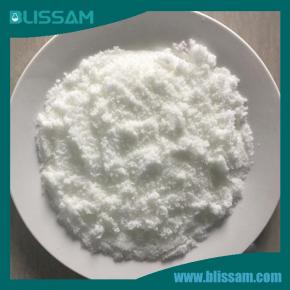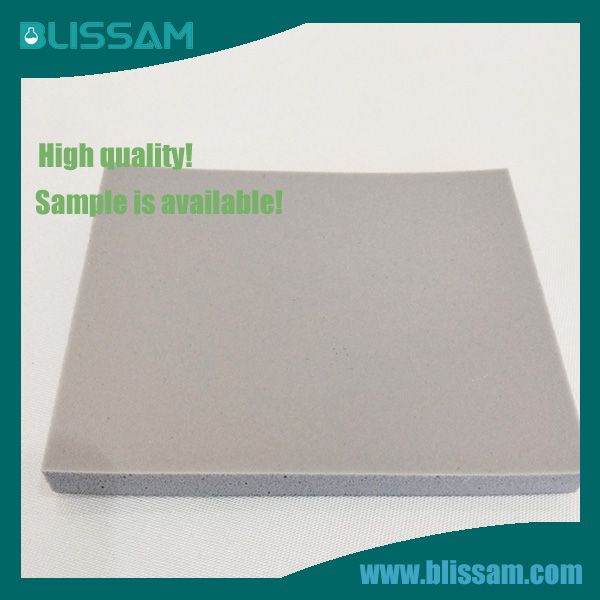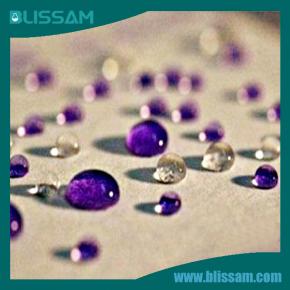In industries ranging from construction and automotive to textiles and electronics, ensuring that materials are protected from water damage is essential. Water repellents and silicone foam are two popular solutions used to achieve water resistance and waterproofing. Each product has its unique properties, application techniques, and ideal use cases. Understanding the differences between these materials and the best practices for their application is critical for businesses and manufacturers seeking optimal performance in their products.
BLISSAM, a leading manufacturer in China with extensive experience in producing high-quality water repellents and silicone foam, offers insight into these products and their proper use. In this article, we'll explore the key differences between water repellents and silicone foam, their advantages, and best practices for applying these materials effectively.
Water repellents are chemical formulations applied to surfaces to make them resistant to water penetration. They work by creating a hydrophobic (water-repellent) layer on the surface, preventing water from being absorbed into the material. Water repellents are widely used in construction for protecting concrete, stone, brick, and wood surfaces. They are also commonly used in the textile industry to create water-resistant fabrics.

Breathability: Water repellents allow materials like stone and concrete to "breathe," meaning they can release moisture from within while still preventing water penetration from the outside. This is essential in construction, where trapped moisture can lead to mold and structural damage.
Long-Lasting Protection: When applied properly, water repellents can provide long-lasting protection against water damage, reducing the need for frequent maintenance or replacements.
Versatility: Water repellents can be applied to a wide range of materials, including textiles, wood, stone, and concrete, making them a versatile solution for water protection across different industries.
Cost-Effective: Compared to other waterproofing solutions, water repellents offer a good balance between cost performance and effectiveness. They are often a more affordable option while still providing durable protection.
For optimal performance, it is essential to follow the correct application techniques when using water repellents. BLISSAM, as a supplier of high-quality water repellents, emphasizes the importance of preparation and proper application for best results.
Surface Preparation: Ensure that the surface is clean, dry, and free of any contaminants such as dirt, oil, or mold. A clean surface ensures better adhesion of the water repellent and more effective protection.
Apply Evenly: For uniform protection, apply the water repellent evenly across the entire surface using a sprayer, brush, or roller. In large applications such as construction, airless sprayers can help achieve more consistent coverage.
Multiple Coats for Porous Surfaces: On highly porous surfaces like brick or concrete, applying multiple coats of water repellent may be necessary to ensure thorough coverage. Allow sufficient drying time between coats for best results.
Follow Manufacturer Guidelines: Each water repellent product has its specific application instructions. Be sure to follow the manufacturer's guidelines provided by BLISSAM or other suppliers to achieve the best possible outcome.
Silicone foam, on the other hand, is a versatile material used for sealing, insulation, and waterproofing in a wide variety of industries, including electronics, automotive, and construction. Silicone foam forms a durable, flexible barrier that provides both water resistance and insulation. It is especially valued for its ability to withstand extreme temperatures and harsh environmental conditions.

Superior Sealing and Insulation: Silicone foam creates a watertight seal that prevents water from penetrating even in the most challenging conditions. Its insulating properties make it ideal for applications requiring thermal or electrical insulation.
Flexibility and Durability: Silicone foam remains flexible even in low temperatures and resists degradation in high temperatures, making it suitable for both indoor and outdoor use. It retains its properties over time, offering long-term durability.
Customizable for Specific Needs: Through OEM/ODM capabilities, companies like BLISSAM can provide silicone foam formulations customized to specific industry requirements, whether for automotive gaskets, electronic seals, or protective covers.
Chemical Resistance: Silicone foam is resistant to a wide range of chemicals, making it a good choice for applications where the material might be exposed to oils, solvents, or other industrial substances.
Silicone foam can be applied in various ways depending on the specific application, but following these best practices will help ensure optimal performance.
Surface Preparation: As with water repellents, ensuring that the surface is clean, dry, and free of contaminants is essential for proper adhesion. For certain applications, light sanding or priming may be necessary to improve bonding.
Proper Mixing and Application: If the silicone foam comes in a two-part formulation, ensure that the components are mixed properly to activate the foam’s properties. Use the correct application method, whether it’s dispensing through a tube, casting, or applying sheets.
Consider Expansion: Silicone foam expands as it cures, so ensure there is sufficient space for the material to expand fully when sealing joints or gaps.
Curing Time: Allow the silicone foam to cure fully before subjecting it to water exposure or stress. Follow BLISSAM's product guidelines for curing times to ensure a watertight seal and optimal performance.
Customization Options: For specific industrial applications, working with a manufacturer that offers customization, such as BLISSAM, ensures that the silicone foam is tailored to the exact needs of your project, whether it involves specific hardness, density, or insulation properties.

Both water repellents and silicone foam have their unique strengths, making them ideal for different types of projects. Understanding the material properties and application techniques can help industries choose the right product for their needs.
For Porous Materials and Breathability: Water repellents are ideal for protecting materials like concrete, stone, and textiles that need to release internal moisture while preventing water from penetrating from the outside.
For Sealing and Insulating: Silicone foam is better suited for applications where creating a watertight, flexible barrier is crucial. It’s ideal for gaskets, sealing joints, and insulating electrical components.
In many cases, the two products may even be used together in different parts of a project for comprehensive protection.
Water repellents and silicone foam each have their place in industrial applications, and understanding their unique properties is key to choosing the right material for your needs. BLISSAM, a trusted distributor and supplier, offers high-quality products and expert guidance on the proper use of both water repellents and silicone foam. By following best practices and leveraging the expertise of a reliable manufacturer, businesses can maximize the durability, performance, and longevity of their projects, ensuring that materials are protected from water damage in the most efficient way possible.
Contact:
Phone: +86-15957191858
E-mail: info@blissam.com
Whatsapp:+8615957191858
Add: A647, No. 9, Xiyuan Road, Xihu District, Hangzhou, Zhejiang, China
We chat
